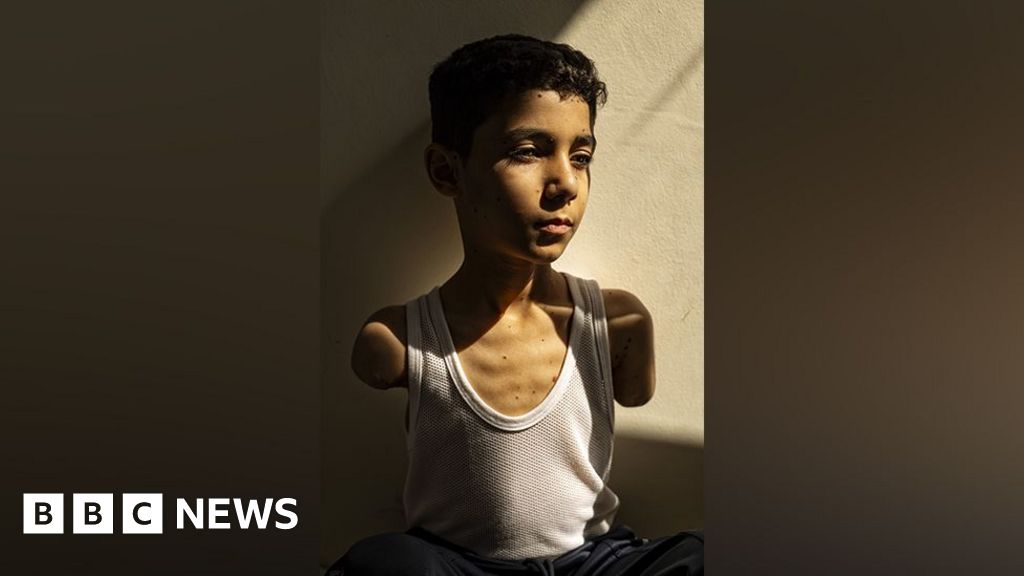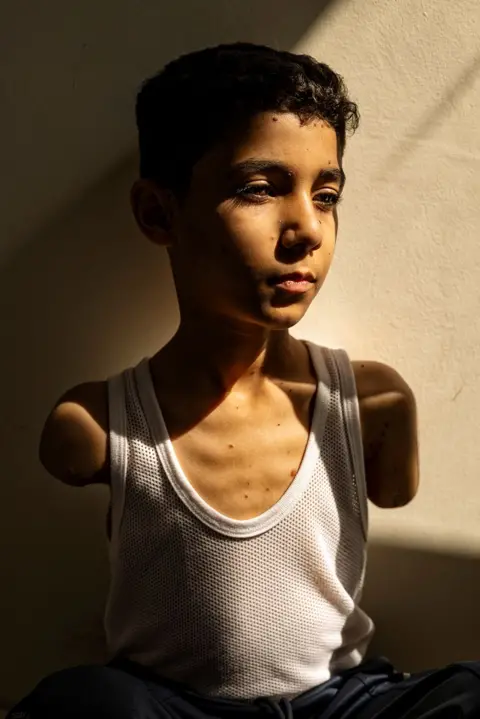 Samar Abu Elouf for the New York Times
Samar Abu Elouf for the New York TimesA haunting image of a young Gazan boy recovering from war injuries has been named World Press Photo of the Year for 2025.
The portrait, taken by Palestinian photographer Samar Abu Elouf for the New York Times, shows nine-year-old Mahmoud Ajjour, who lost both arms in an Israeli airstrike in Gaza City in March 2024.
Abu Elouf, who was evacuated from Gaza in late 2023, lives in the same apartment complex as Mahmoud in Doha, Qatar.
She has documented the lives of several wounded Gazans who made it out for treatment.
“This is a quiet photo that speaks loudly,” said World Press Photo executive director Joumana El Zein Khoury.
“It tells the story of one boy, but also of a wider war that will have an impact for generations.”
Two finalists were selected as runners up alongside the photo of the year.
Night Crossing by John Moore for Getty Images and Droughts in the Amazon by Musuk Nolte for Panos Pictures, Bertha Foundation.
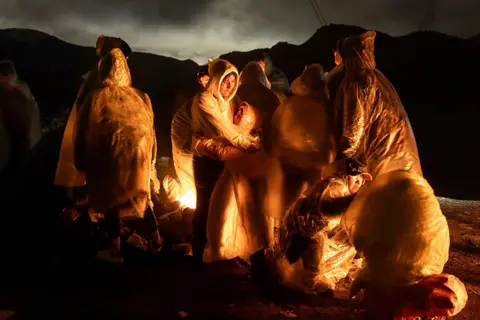 John Moore for Getty Images
John Moore for Getty ImagesThis striking image offers a powerful, intimate view of life at the border, capturing the complex realities of migration often lost in the polarised debate in the United States.
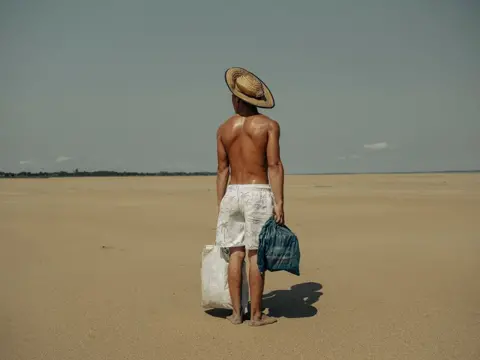 Musuk Nolte Panos Pictures, Bertha Foundation
Musuk Nolte Panos Pictures, Bertha FoundationA young man carries food to his mother in the Amazon village of Manacapuru – once reachable by boat, now cut off by drought.
He walks two kilometres along a dry riverbed, a stark reminder of the region’s deepening water crisis.
The sight of parched, desert-like terrain in the world’s largest rainforest underscores the alarming scale of the drought.
This year’s winners represent the best of the 59,320 photographs by 3,778 photographers from 141 countries.
Here is a selection of the regional winners, with captions from the competition.
The three categories were singles (solo photographs), stories (series of 4-10 photos) and long-term projects (24-30 photos on a single theme).
Africa, Singles: Tamale Safalu by Marijn Fidder
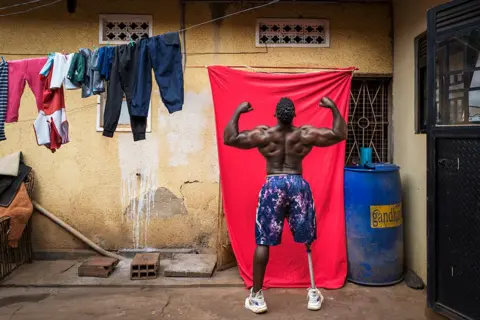 Marijn Fidder
Marijn FidderTamale Safalu trains in front of his home in Kampala, Uganda. Safulu lost his right leg in a motorcycle accident but still competes, becoming the first bodybuilder with a disability in Uganda to compete against able-bodied athletes.
Africa, Stories: The Elephant Whisperers of Livingstone by Tommy Trenchard, Panos Pictures, for NPR
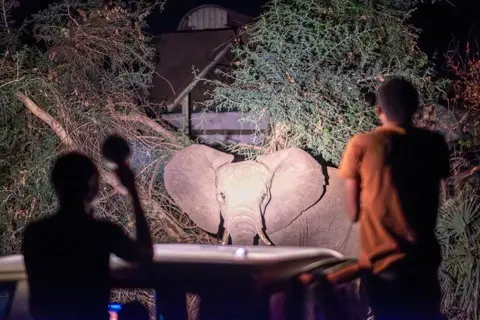 Tommy Trenchard for Panos Pictures
Tommy Trenchard for Panos PicturesIn Livingstone, Zambia, failed rainy seasons and expanding human settlements have fuelled a sharp rise in human-elephant conflict. In 2024 alone, elephants killed at least 11 people in the area.
A local volunteer group is now working to protect both communities and wildlife.
Africa, Long-term projects: Women’s Bodies as Battlefields by Cinzia Canneri, Association Camille Lepage
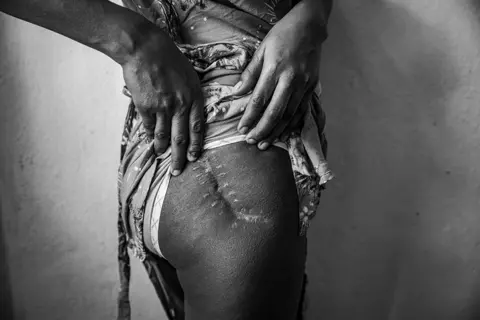 Cinzia Canneri for Association Camille Lepage
Cinzia Canneri for Association Camille LepageIn 2017, photographer Cinzia Canneri began documenting the lives of Eritrean women escaping authoritarian rule.
Since the war in Ethiopia’s Tigray region erupted, her focus has widened to include Tigrayan women fleeing violence.
Both groups have faced brutal attacks, including rape, torture, and shootings. Zayid, 23 (not her real name – pictured) was raped in a refugee camp in Amhara.
While fleeing with her family to Addis Ababa, she and her sister were shot and wounded by Amhara soldiers.
Asia, Stories: Korea Adoption Fraud by Jae C. Hong for Associated Press
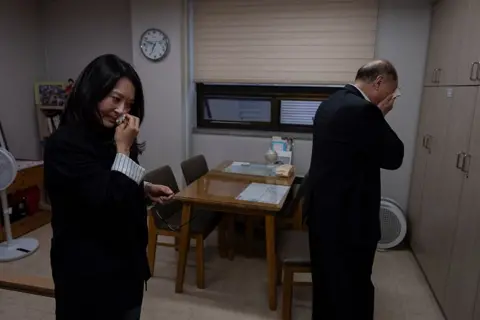 Jae C. Hong for Associated Press
Jae C. Hong for Associated PressSince the 1950s, around 200,000 Korean children have been adopted into the United States.
An Associated Press investigation has revealed widespread fraud in adoption documents, leaving many adoptees with false or incomplete histories.
For individuals like Nicole, who is pictured, the search for identity has uncovered painful truths about their past.
Europe, Singles: A Nation in Conflict by Ye Aung Thu
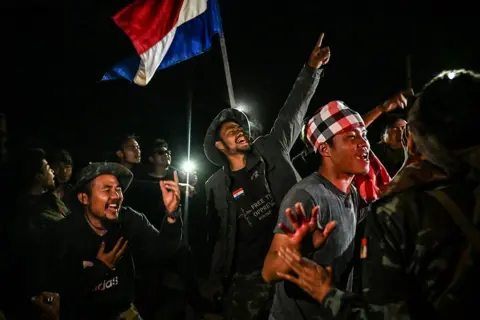 Ye Aung Thu
Ye Aung ThuMyanmar, formerly Burma, has faced decades of unrest and conflict since gaining independence, with ongoing struggles for ethnic and regional autonomy.
Ye Aung Thu, who witnessed the 1988 military coup at the age of six, saw history repeat itself in 2021 when his own son was the same age.
He has since travelled across the country, documenting insurgent groups and capturing how their resilience offers hope amid turmoil.
Asia, Long-term projects: Te Urewera – The Living Ancestor of Tūhoe People by Tatsiana Chypsanava, Pulitzer Center, New Zealand Geographic
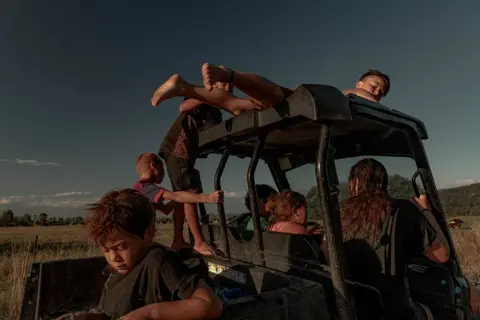 Tatsiana Chypsanava for Tatsiana Chypsanava, Pulitzer Center
Tatsiana Chypsanava for Tatsiana Chypsanava, Pulitzer CenterThe Ngāi Tūhoe people of the Te Urewera region in New Zealand have maintained a staunch independence. With a 2014 agreement, the New Zealand government opened the way to Tūhoe managing their ancestral lands according to their cultural values.
Recent changes by New Zealand’s right-wing government are seen as reversals of such policies regarding indigenous peoples. Yet the Tataiwhetu Trust farm in Te Urewera offers a revitalising model for a younger generation.
Europe, Singles: Beyond the Trenches by Florian Bachmeier
 Florian Bachmeier
Florian BachmeierOngoing conflict in their home village near Kupiansk, a frontline city in Russia’s invasion of Ukraine, forced Anhelina’s family to seek refuge.
She now lives with her grandmother, Larisa, in Borshchivka, 95km from Kupiansk, while her mother lives and works in Kharkiv, about an hour’s journey away.
Europe, Stories: Maria by Maria Abranches
 Maria Abranches
Maria AbranchesAna Maria Jeremias has spent over four decades working as a carer and domestic worker in Portugal, reflecting the experience of many women across Europe.
Trafficked from Angola at the age of nine under the false promise of an education, she has since played a vital, often overlooked, role in the lives of the families she has served.
Europe, Long-term projects: It Smells of Smoke at Home by Aliona Kardash, DOCKS Collective, for Stern Magazine
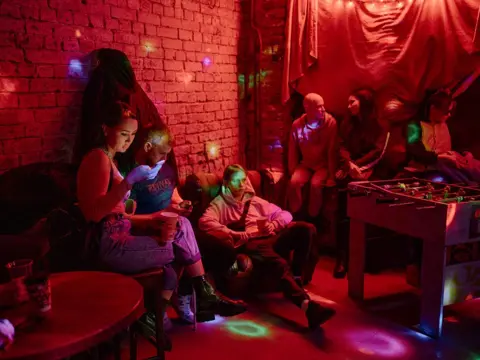 Aliona Kardash for DOCKS Collective
Aliona Kardash for DOCKS CollectiveKardash, a Russian-born photographer now living in Germany, reflects on the loss of home and the pain of loving those who see the world differently.
Returning to her hometown, she seeks to capture how war reshapes lives, while holding on to the hope that human connection can endure even amid deep divisions.
North and Central America, Singles: Attempted Assassination of Donald Trump by Jabin Botsford, for The Washington Post
 Jabin Botsford for The Washington Post
Jabin Botsford for The Washington PostThe assassination attempt on Donald Trump is widely seen as a pivotal moment in the 2024 presidential campaign, with lasting implications for the political future of the United States.
Moments after the shooting, the Republican nominee shouted “Fight, fight, fight!” as he was led from the stage.
Captured seconds later, this image offers a rare glimpse of vulnerability in a campaign centred on strength and resilience.
North and Central America, Stories: A Place to Die by Oliver Farshi
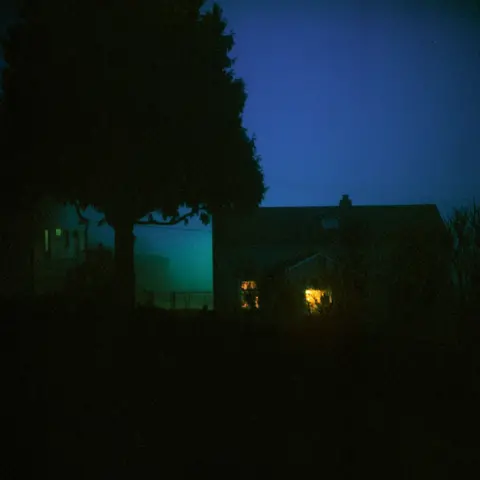 Oliver Farshi
Oliver FarshiFarshi’s project examines how people confront death in a setting shaped by compassion and choice.
In a quiet residential neighbourhood in Washington state, where assisted dying is legal in certain circumstances, a house offers the terminally ill a place to spend their final hours, surrounded by care and community.
Here, with support and dignity, some choose to end their lives by taking prescribed medication, highlighting the deeply personal, and often tender, process of dying.
North and Central America, Long-term projects: Life and Death in a Country Without Constitutional Rights by Carlos Barrera, El Faro, NPR
 Carlos Barrera for El Faro
Carlos Barrera for El FaroIn 2022, El Salvador declared a “state of emergency” to combat gang violence, restricting rights like assembly and privacy.
Renewed 35 times by March 2025, it has led to mass incarceration and overcrowded prisons, where reports of abuse and neglect are common.
This project focuses on the personal stories behind these policies, revealing the human toll of the crackdown.
South America, Singles: Aircraft on Flooded Tarmac by Anselmo Cunha, Agence France-Presse
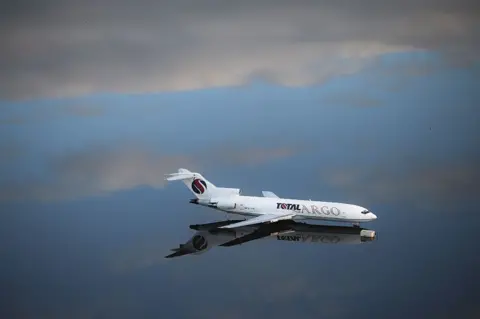 Anselmo Cunha for Agence France-Presse
Anselmo Cunha for Agence France-PresseBetween April and June 2024, record-breaking rainfall in the state of Rio Grande do Sul, Brazil, led to the worst flood in the area’s history.
South America, Stories: Jaidë by Santiago Mesa
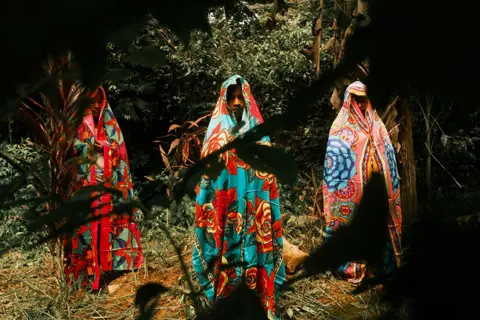 Santiago Mesa
Santiago MesaThe Emberá Dobida, a nomadic indigenous group from Colombia, have migrated to Bogotá to escape paramilitary violence but face discrimination in the capital.
Suicides in the community have risen sharply, from 15 between 2015 and 2020 to 67 suicides and over 400 attempts by 2024.
This project highlights the lives of Emberá women affected by the crisis, shedding light on their struggles.
South America, Long-term projects: Paths of Desperate Hope by Federico Ríos
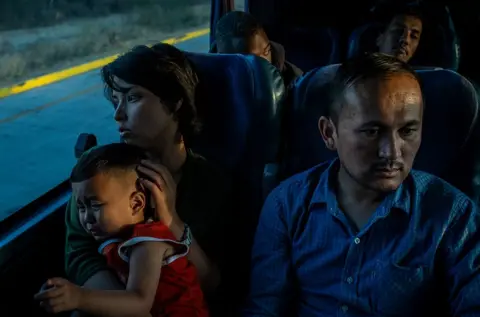 Federico Ríos
Federico RíosThis project follows the dangerous journeys of migrants crossing the Darién Gap, a 100-kilometre stretch of dense jungle between Colombia and Panama.
Their paths are fraught with peril, from treacherous rivers and harsh terrain to the constant threat of violence and exploitation.
West, Central, and South Asia, Singles: Drone Attacks in Beirut by Murat Şengül, Anadolu Agency
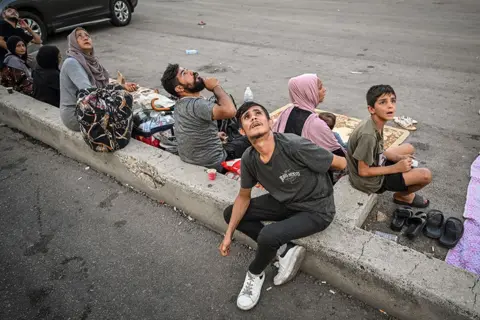 Murat Şengül
Murat ŞengülCross-border attacks between Israel and Lebanon-based Hezbollah, which had been ongoing since the start of the Gaza conflict, intensified sharply in September 2024.
Beirut, once a safe haven for those fleeing airstrikes in southern Lebanon, itself came under fire as the violence spread northwards.
West, Central, and South Asia, Stories: No Woman’s Land by Kiana Hayeri, Fondation Carmignac
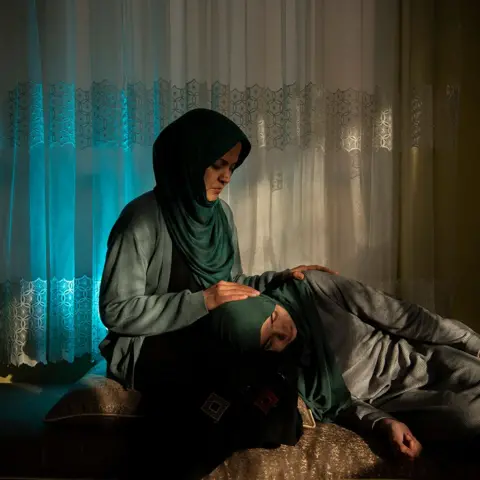 Kiana Hayeri for Fondation Carmignac
Kiana Hayeri for Fondation CarmignacIn Afghanistan, the Taliban government denies access to education to girls over 12, bars them from most work outside the home and in some regions, forbids them from leaving home without a male guardian, or with their face uncovered.
The spaces where women once gathered freely are now off limits. Despite these restrictions, Afghan women find subtle but powerful ways to resist.
West, Central, and South Asia, Long-term projects: Bullets Have No Borders by Ebrahim Alipoor
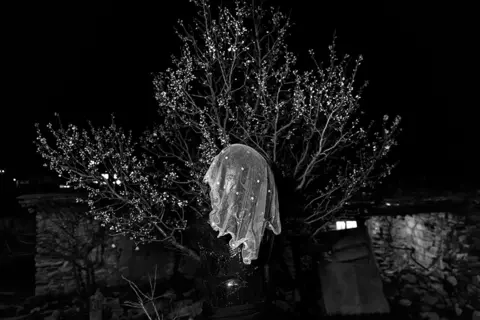 Ebrahim Alipoor
Ebrahim AlipoorKolbars (border couriers) carry goods, such as household appliances, mobile phones, and clothes, on their backs through treacherous terrain from Iraq and Turkey into Iranian Kurdistan.
Decades-long marginalisation of Kurds means widespread unemployment in the region, driving many to a life of kolbari, where they risk being shot by security forces and border patrols.
All photographs courtesy World Press Photo Foundation
The World Press Photo Exhibition 2025 will take place at MPB Gallery, Here East, London from 23rd May – 25th August 2025
